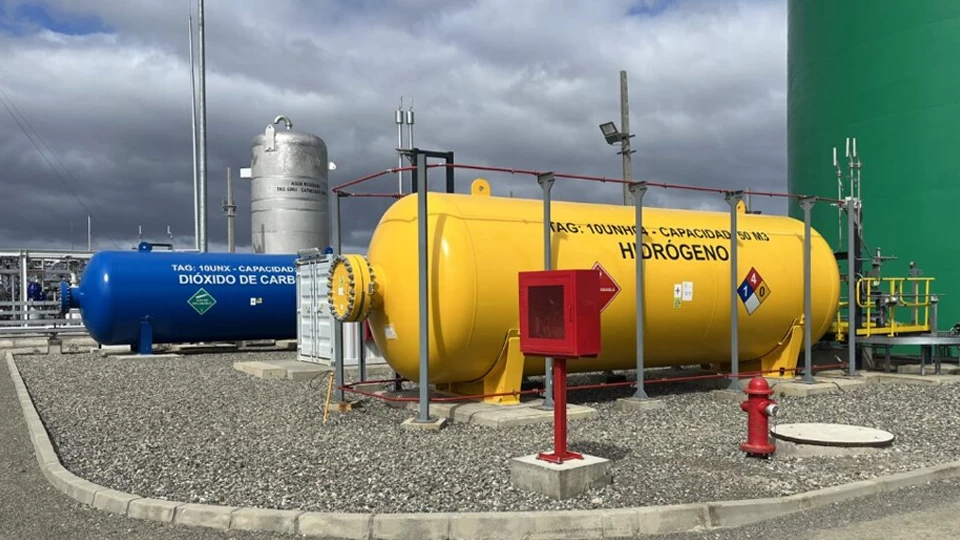
Colombia is in an impressive leadership position: the country generates as much as 75 percent of its electricity from renewable energy – more than twice the global average and significantly more than the 60 percent across Latin America and the Caribbean. This week, the World Bank and the Asociación Hidrógeno Colombia held the 3rd Hydrogen for Development Partners Meeting in Bogotá to help Colombia take the next step by using some of its low-cost solar and wind energy to produce hydrogen, a powerful gas critical in the fight against climate change.
Clean hydrogen generated by using renewable energy sources or natural gas with carbon capture is such a valuable tool because it is an energy carrier that can substitute fossil fuels in heavily CO2-emitting industries: cement, steel, mining, and chemicals and heavy-duty transport such as trucking, shipping, and aviation. It has the potential to ‘decarbonize’ sectors where greenhouse gas emissions are ‘hard-to-abate.' Next to helping Colombia and Latin America and the Caribbean reach its climate goals, the production of green hydrogen generates economic opportunities and reduces exposure to oil price volatility and supply disruptions.
So, what’s the challenge? Clean hydrogen is a young industry, its production expensive, and off-take markets uncertain. As a result, financing is hard to come by at reasonable prices, deterring investors. While Latin America and other emerging markets with significant renewable resources are well positioned to develop clean hydrogen, 90 percent of those hydrogen investments remain stuck at the announcement or feasibility stage; only seven percent have reached final investment decision stage.
The World Bank is determined to help change this. We offer tailored financial products to lower the risks as the private sector sees them (typically, off-take risks and lack of affordable financing) to help bridge the cost gap that clean hydrogen still faces. We can transfer favorable, concessional terms of our loans to the private sector through flexible credit lines and risk mitigation instruments and guarantees.
In fact, we have already done this. Last year, the World Bank’s $150 million loan to promote Chile’s clean hydrogen development was the first-ever of its kind. It is part of an investment package of $1 billion together with four other Multilateral Development Banks. Here too, the objective is transferring concessional terms from the World Bank (below-market interest rates, tenure, and grace period) to lower the cost of financing and attract the private sector through flexible credit lines and risk mitigation instruments.
Colombia is very well positioned to benefit from the trend towards clean hydrogen because of its excellent renewable input energy sources such as hydropower, solar photovoltaics, and onshore and offshore wind. The Asociación Hidrógeno Colombia reports that the country has as many as 28 hydrogen projects in preparation. What may be needed here is help in bringing these to fruition. The Hydrogen for Development meeting in Bogotá this week advised the Colombian government on how to boost the industry. H4D is a World Bank initiative hosted by its Energy Sector Management Assistance Program (ESMAP) and designed to share best practices among government and private sector players as emerging markets accelerate clean hydrogen deployment.
Colombia’s 28 early-stage hydrogen projects would require as much as 15 gigawatt electrolyzer capacity, the process by which hydrogen is produced using renewable energy. To generate these 15 gigawatts, Colombia would need an enormous amount of renewable power: 50 percent more than its current total power output of 20 gigawatts. That is an immense task. Tackling it would have to start with scaling up renewable power. While wind generation in Colombia’s La Guajira region on the Caribbean coast has potential, it is critically important that the public accepts the installation of more renewable energy production facilities. Stakeholders also need to ensure that the transition away from fossil fuels happens in a way that is fair to those that used to work in these industries. Finally, socioeconomic benefits of hydrogen production must accrue to as many Colombians as possible. The World Bank just approved a $750 million low-interest loan to support Colombia’s efforts to toward long-term sustainable growth by promoting key institutional reforms for decarbonization and climate resilience.
Globally, the World Bank/ESMAP started a public-private ‘10 GW lighthouse initiative.’ The idea is to select emerging market projects of 100 MW to 1 GW in size from the existing global pipeline and support those in reaching final investment decision by 2026. Governments, financial institutions, and private operators are welcome to join us.
In sum, the World Bank is trying to mobilize private funding by passing on concessional lending terms and risk mitigation instruments to companies to help make projects financially viable. We also crowd in capital from other Multilateral Development Banks and climate funds. And we are advising Colombia and other governments on how best to support a nascent hydrogen industry with regulations and infrastructure that entices investors to put up money, helps meet climate goals, and benefits local populations.
Subscribe here to stay up to date with the latest Energy blogs.



Join the Conversation